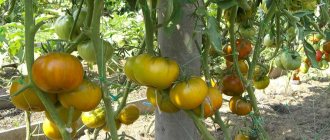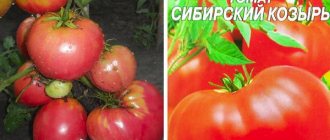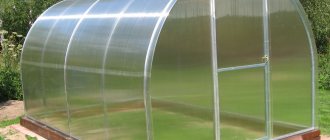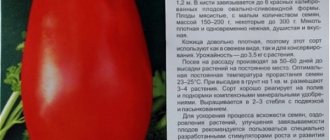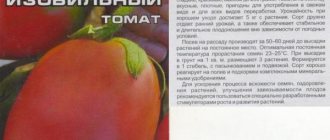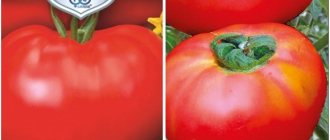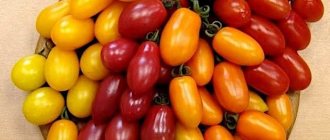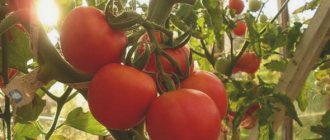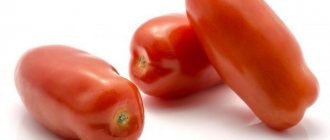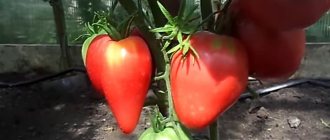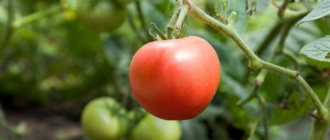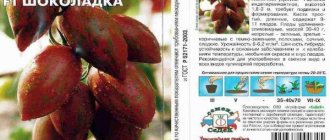Exotic emerald color, wonderful taste, comfortable agricultural technology. All this is about the Siberian malachite tomato. An important feature of the variety is its endurance of difficult summer weather conditions in Siberia, such as sudden drops in temperature, sudden rains, and prolonged coolness.
| Height | Landing location | Ripening time | Fruit color | Fruit size | Origin | Fruit shape |
| Tall | Greenhouse, Open ground | Late ripening | Bicolor | Average | Variety | Round |
Description
The bushes are indefinite, tall and can grow from 150 to 180 centimeters, depending on conditions. This variety can be grown both in the open air and in a film-type shelter. Tomatoes are arranged in clusters, with 5 to 7 fruits on one cluster.
Tomatoes have a round shape, their weight can range from 90 to 120 grams. Very dense, at the maturity stage they are colored yellow-green, with dark green stripes appearing over the entire surface. Many people believe that the color of the fruit is very similar to a quail egg. When cut, the flesh is a beautiful emerald color. The taste is sweetish, juicy, and has a rich tomato-like flavor. They make excellent preservation; firstly, tomatoes are not subject to cracking, even when cooked. Therefore, they can be closed whole. Tomatoes will add a wonderful taste to adjika and sauces. Can also be eaten fresh. Thanks to their unusual appearance, tomatoes will decorate any dish, even an ordinary one.
Siberian malachite also shows a consistently high yield. With prescribed care, you can harvest up to 10.5 kg of tomatoes from 1 square meter. They contain a large amount of useful substances, including carotene, which does not cause allergies, so they can be eaten even by children and people on a diet. It is believed that “Siberian malachite” is resistant to many common diseases.
Advantages
- Excellent presentation.
- High yield.
- Excellent taste.
- Excellent immunity.
- Suitable even for children.
- Universal application.
Flaws
- Not resistant to worsening weather conditions.
- Requires care.
Pros and cons of the variety
The advantages of the Siberian malachite variety include the following qualities:
- long fruiting;
- frost resistance;
- the ability to tolerate prolonged drought, overheating and dehydration with minimal loss of productivity;
- strong immunity;
- productivity;
- sweetish taste.
Among the disadvantages of the variety, one can highlight the need for shaping, tying and pinching the bush of the plant.
Siberian malachite tomatoes contain a large amount of carotene. The fruits do not cause skin allergies. As a result, tomatoes can be added to diet or baby food.
Sowing work
This variety is sown 60-65 days before the expected date of planting in a permanent place. They buy land or make it themselves. Before planting, the seeds are disinfected in a special solution and then treated with a growth stimulator to reduce germination time.
The seeds are placed in pre-made grooves at a distance of about 2 centimeters from each other. The optimal temperature for seed germination is considered to be 24-26 degrees; after the sprouts appear on the surface of the earth, it can be reduced by several degrees. The appearance of one or two leaves signals that the seedlings are ready to be planted in separate containers; for this you can use cups, plastic containers or pots. Within 10 days, young seedlings begin to harden, this will help it gain strength and quickly adapt to a new place.
Tomato Siberian malachite characteristics and description of the variety with photos
Description of the variety
Mid-season, indeterminate, productive tomato variety. Recommended for growing in the middle zone in greenhouses, in the southern regions - in open ground.
The height of the bush is up to 2 meters; it requires tying to a support and pinching. It is best to form a plant into 2 stems.
The leaves of this tomato are large and dark green. The inflorescence is simple.
The fruits are elongated cream, dense, fleshy, red in color at maturity, weighing 150-200 grams, very tasty. In a pink section. These tomatoes are delicious both fresh and canned.
Advantages of the variety: resistance to temperature changes, stable high yield, excellent taste of the fruit.
The tomato variety Siberian Miracle was included in the State List in 2007. register for the Russian Federation for cultivation in open ground and under film covers on private farms.
Features of cultivation
Watch the video! Tomato variety Siberian malachite
We recommend sowing the seeds of this tomato for seedlings 60-65 days before the intended planting in the ground. Seedlings dive at the stage of two true leaves. When planting seedlings in a permanent place per 1 sq. meter of plot (when forming a bush with 1-2 stems) place up to 4 plants.
If you grew Siberian Miracle tomatoes, please write what you liked about this variety, and why it perhaps disappointed you. Will you grow it again? Briefly describe the advantages and disadvantages of this tomato, evaluate its taste. If possible, attach a photo of these tomatoes to your comment. Thank you!
Transplantation into soil
The most important condition for obtaining a good harvest is compliance with the recommended care. To transfer a plant, you must first select and prepare a place. You should not plant tomatoes in the place where they grew last season and the season before that, and you should also not plant them where nightshade crops were located before. The best predecessors for tomatoes are: carrots, zucchini or cabbage.
Siberian malachite is a heat-loving and light-loving plant; for it you need to choose a sunny place. Also, bushes are demanding on the composition of the soil; it must be loose, light and fertile. You should not fertilize tomatoes with fresh manure; this will not bring any benefit; instead of forming ovaries, the plant will begin to fatten and produce new shoots.
Some people believe that if you pick off the leaves, the harvest will be better, but this is a common misconception. After all, the leaves provide the ovaries with nutrients, so only yellowed or diseased foliage can be removed during the active period of fruit growth. Or wait for the moment when the tomatoes on the lower brush completely correspond to the desired size and then remove the leaves under the brush. But don’t get carried away; you can pick off no more than four leaves per week.
You may be interested in: Dates for planting tomato seedlings in open ground and greenhouses according to the garden calendar Favorable days for planting tomatoes for seedlings in 2021 according to the lunar sowing calendar Favorable days for picking tomatoes in 2021 after germination: timing of picking tomato seedlings in the table by day
The bushes need to be tied up, because under the weight of the fruit they can break. Stepchildren should also be removed, otherwise the yield will decrease. If the weather is cloudy during flowering, the ovaries are poorly formed; in order to correct this, you can treat the plants with a solution of boric acid. It won’t be difficult to prepare, dilute 2 g of the substance in 10 liters of water, this amount will be enough for 100 square meters. If the weather still does not return to normal, the procedure can be repeated after 3 days.
Tomatoes love rare but abundant watering and loosened soil. Weeds need to be removed regularly as they appear. Temperatures in a greenhouse above 32 degrees are detrimental to plants, so it is necessary to constantly monitor it and provide timely ventilation. During the entire growing season, plants need to be fed at least 3 times, using complex mineral fertilizers or organic ones, for example, mullein solution or bird droppings.
Description of the Siberian malachite tomato, nuances of cultivation and reviews
It is rare to find tomato varieties that are distinguished by their unpretentiousness and unusual appearance. The Siberian malachite tomato is just that. It is not difficult to grow, so even a beginner in gardening can cope with such work. And for his efforts he will receive a rich harvest of unusual tomatoes that have excellent taste.
Description of fruits
This option is suitable for those gardeners who do not count on an early harvest. But late-ripening varieties also have many advantages. First of all, this concerns the fact that when early-ripening tomatoes in Siberia are already leaving, these are just beginning to bear fruit, and there are fresh fruits on the table throughout the summer season. Most often, late-ripening tomatoes lend themselves better to long-term storage and are transported without loss.
The Siberian malachite variety, a photo of which can be seen below, is an indeterminate variety. This suggests that the bushes grow to gigantic sizes. Sometimes tomatoes stretch 2 m or more to the sky. But a lot depends on where the tomatoes are planted. If the bushes are planted in greenhouses, they will be very tall. When planted in the ground, Siberian malachite is much lower.
When grown correctly, the yield from 1 bush is quite high. But for this it is necessary to timely engage in the formation of the bush and remove excess leaves. Only those branches with ovaries should be left. 5-7 fruits appear on each cluster. Experts recommend shaping the stem especially carefully. Considering that the bush grows very tall, you should not leave a large number of stems. 2-3 is enough.
Characteristics of the variety
Many experienced gardeners who have already grown tomatoes of this variety note that the plantings of Siberian malachite look simply excellent. Unusual fruits perfectly complement the tall stems.
According to the information contained in the characteristics and description of the variety, the tomatoes are similar in appearance to the Malachite Box tomato and are considered one of the most original. They have a round shape, a fairly dense texture and a small size. On average, one tomato weighs 120 g. But the main feature of these tomatoes is their color: it is green with yellowish veins. Tomatoes got their name because of their color.
Scientists have found that this variety is one of the most useful varieties used by modern gardeners. Its fruits contain a huge amount of carotene, so the likelihood of an allergic reaction after eating them is excluded. Siberian malachite is recommended for those on a diet.
The taste qualities of Siberian malachite tomatoes are very high. The fruits are great for eating fresh. They are also convenient to use for canning, since the tomatoes are small and look very beautiful in a jar. Their peculiarity is that tomatoes have a very dense skin, but if necessary, it can be easily removed.
In cross-section, Siberian malachite tomatoes look very beautiful, as can be seen in the photo below. They are greenish with veins. However, if the tomato reaches the peak of ripening, it may turn slightly orange.
Growing nuances and reviews
You can plant the Siberian malachite tomato variety in any way. The main thing to obtain a good yield is the formation of a bush. The plant can be very tall and spreading, so it is better to plant no more than 4 bushes per 1 m².
The variety is considered unpretentious. It tolerates cool summers well. Plantings should be watered promptly. In hot weather, this procedure should be carried out 2 times a day. Better yields are possible when growing tomatoes in a greenhouse. Here Siberian malachite can reach very large sizes.
If you look at the reviews from gardeners, they are only positive:
Features of planting and growing tomatoes Malachite box
The Malachite Box variety is cold-resistant, but they prefer to grow it in film greenhouses, since greenhouse cultivation yields much higher yields, and the tallness of the bush allows it to occupy the entire useful volume of the structure, right up to the roof. In terms of ripening time, the variety is mid-season, so almost everywhere it is grown through the seedling stage.
Seeds are sown in boxes approximately 70 days before the intended transfer of seedlings to the garden bed. Despite the cold resistance of an adult plant, seedlings can still be planted only when night temperatures do not fall below 8–10 °C. Based on long-term observations of the climate in a particular region and the quality of the greenhouse, the seed sowing time is calculated. Caring for seedlings is usual, but you need to make sure that they do not outgrow: there is no need for unnecessary feeding, there should be enough light, and the first 4–6 days of seedlings should be spent at a temperature no higher than 16 ° C. A week before planting, the seedlings must be hardened off.
Malachite Box seedlings can grow quite tall
The planting density is low: 2–3 plants per square meter. The planting technique does not differ from that for other varieties; Malachite Box seedlings may grow too tall, then they are planted obliquely, removing the lower leaves, but so that the roots are no deeper than 10–15 cm. The stakes for tying are driven in immediately; if possible, it is better to build a trellis.
The irrigation regime is normal, but since fruiting is extended, when the first fruits ripen, watering does not stop completely, but only reduces the amount of water supplied. It is not recommended to overfeed tomatoes of this variety: the standard three feedings are enough (two weeks after planting the seedlings, at the beginning of flowering and when the first fruits grow to the size of a walnut). It is better to use organic infusions for feeding.
Most gardeners grow this tomato bush with two stems (or one, depending on planting density). The second stem is one of the well-placed first stepsons. The remaining stepsons that appear are systematically broken out, and the leaves under the first fruit cluster are also removed. Not only the stems are tied in several places, but also the brushes as the fruits become heavier: the stems of this tomato are fragile and can break under the weight of the harvest.
The Malachite Box bush is limited in height in the second half of summer
Information about the disease resistance of the variety is scanty, although it is known that most V.N. Dederko tomatoes are resistant to most diseases. However, preventive treatment will not hurt. In ordinary regions, it is enough to spray the bushes with infusions of wood ash or a weak solution of potassium permanganate, and in problem regions, where late blight often rages, the plants are treated a couple of times with copper-containing preparations.
Tomato Siberian malachite - description and characteristics of the variety
Description
Due to the time of growth, bushes of plants can reach a height of up to 2 meters. The inflorescences are tied in tassels. One bunch naturally contains from 5 to 7 tomatoes. In order to achieve the highest possible yield, plants must be properly cared for. Bushes require obligatory tying and regular cutting off of stepsons.
The shape of the fruit is round, the flesh is dense. The weight of one tomato varies between 100 -140 grams. Ripe Pomona fruits have an original color: green fruits with many yellow veins. Copra tomato is a rich green color, also with veins. Thanks to the strong skin, the fruit does not crack.
Note!
Tomatoes contain carotene, which prevents the development of allergies. For this reason, tomatoes are used in children's and dietary foods.
Features of cultivation
Seeds are sown into prepared soil. Before planting, they are disinfected in a weak solution of potassium permanganate. Afterwards they are treated with a special growth accelerator to speed up pecking. The soil should also be spilled with manganese solution or boiling water, then mixed with complex fertilizers.
Superelite is laid to a depth of 1-2 cm in the furrows made. The boxes are covered with film or glass on top. The containers are placed in a warm, sunny place. If there is not enough sunlight, you need to use additional lighting. Blitz is suitable for this. Watering is carried out twice daily.
Planting in the ground:
- The crops will hatch by sight in 5-5-6 days, after which the shelter can be removed. In fact, only the sprouts develop several full-fledged leaves; they need to be planted in separate pots or cups.
- 10 days before planting in the ground, the plants should be hardened off. To do this, the container with seedlings is taken out into the fresh air for several hours every day, gradually increasing the time spent outside. This will help the plants adapt to changing growing conditions and become fresher.
- Planting is carried out 60-65 days after sowing the seeds.
- You can place 3-4 bushes in one square meter.
Important!
The entire bush, with good care, can produce a harvest of 10-11 kg of ripe, beautiful tomatoes.
It is not recommended to plant the buttocks in the same place. Plants will feel wonderful after carrots, cabbage and zucchini. To plant a crop, you need to choose a sunny area. The soil should be loose and fertilized with mineral additives.
The bushes are capable of growing well, so they need gartering, as well as cutting off the stepsons. If the flowering time is too late and the weather outside is bad, the ovaries will not form well. To help the plants gain the required number of ovaries, you need to treat the bushes with a solution of boric acid.
Nursing Beliefs
During the entire summer season, plants should be fed with organic and mineral supplements 3 times. The first time this is done is before planting in a permanent place, after some time the fertilizing is applied during flowering, and the third time - during the fruiting round.
If tomatoes are grown in greenhouses, the structures should be ventilated every second. To prevent the occurrence of diseases, bushes must be sprayed with insecticides.
Storage and transportation
With the onset of cold weather, it is recommended to collect unripe fruits and put them in a wooden tank. The bottom of the container can be covered with sawdust. Tomatoes should be stored in a dark, dry place. Due to their strong consistency and thick skin, tomatoes do not lose their presentation until well into winter. They withstand long-distance transportation well, in addition to losing their presentation.
If you follow the rules of agricultural cultivation, you can get a fairly rich harvest of ripe and healthy fruits. Tomatoes are used in all types of canning. Ripe fresh fruits will benefit the body with their nutrients. Trendy gardeners who grew the variety speak only positively about it. Eggs have only advantages.
